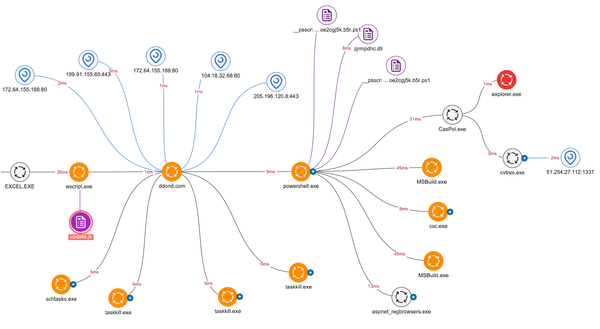Advanced Active Directory Security: Best Practices for Enterprise Environments

Introduction
Active Directory (AD) remains the backbone of authentication and access control in most enterprise infrastructures. However, its complexity and centralization make it a prime target for attackers, especially those employing lateral movement and privilege escalation techniques.
This guide presents a strategic and technical approach to securing AD, focusing on attack surface reduction, detection mechanisms, and operational hardening — tailored for blue teams, SOC analysts, and cybersecurity professionals.
Understanding the AD Attack Surface
A compromised Active Directory often signifies the end of the attack chain — not the beginning. Attackers use techniques such as:
- Credential dumping from LSASS using tools like Mimikatz
- Abuse of Kerberos delegation and ticketing (e.g., golden/silver ticket attacks, Kerberoasting)
- Object permissions manipulation (e.g., DCSync, DCShadow)
- Enumeration using BloodHound
Misconfigurations often pave the way. Attackers exploit lack of auditing, over-privileged accounts, and insecure delegation to escalate rapidly.
Hardening Domain Controllers
Your Domain Controllers (DCs) are critical assets. Their compromise leads to total control of the forest.
Recommended hardening measures:
- Restrict interactive logons to DCs
- Disable unnecessary protocols (e.g., SMBv1, LLMNR, NetBIOS)
- Deploy LSASS protections (like Credential Guard or RunAsPPL)
- Isolate DCs within a dedicated administrative VLAN
For real-world DC exploitation paths and defensive countermeasures, refer to our Red Team Tactics article.
Controlling Privileged Access
Least privilege is not a suggestion — it’s a necessity.
- Audit and reduce membership in Domain Admins and Enterprise Admins
- Use just-in-time access through tools like Microsoft LAPS or PAM solutions
- Monitor the creation and usage of Shadow Admins — accounts with delegated yet powerful rights
- Enforce Privileged Access Workstations (PAWs) for all elevated sessions
Want to validate your AD privilege model? Run a full analysis with PingCastle.
Monitoring and Detection: Building Visibility
Attackers thrive in blind spots. To detect advanced AD threats, deploy a combination of:
- Advanced Audit Policies: Enable logging for LDAP queries, group changes, Kerberos ticket requests, and admin logons
- Log Forwarding to a central SIEM (e.g., ELK Stack)
- Honeytokens and decoy objects to detect enumeration or unauthorized access
All logs should feed into your SOC for real-time detection and threat hunting.
Service Accounts: The Hidden Risk
Service accounts are frequently neglected yet over-privileged.
- Replace static credentials with Group Managed Service Accounts (gMSA)
- Audit logon behavior and restrict interactive use
- Apply tiering: keep service accounts scoped only to the resources they manage
Failure to do so often leads to lateral compromise, especially in ransomware campaigns like those covered in our Ransomware Response Guide.
Conclusion
Securing Active Directory is not a one-time task. It requires continuous assessment, attack simulation, and real-time detection. By combining defensive architecture with strong governance, visibility, and hardening, organizations can build resilient identity infrastructures.
Ready to test your AD environment? Start with an Active Directory Configuration Audit and map your exposure.




